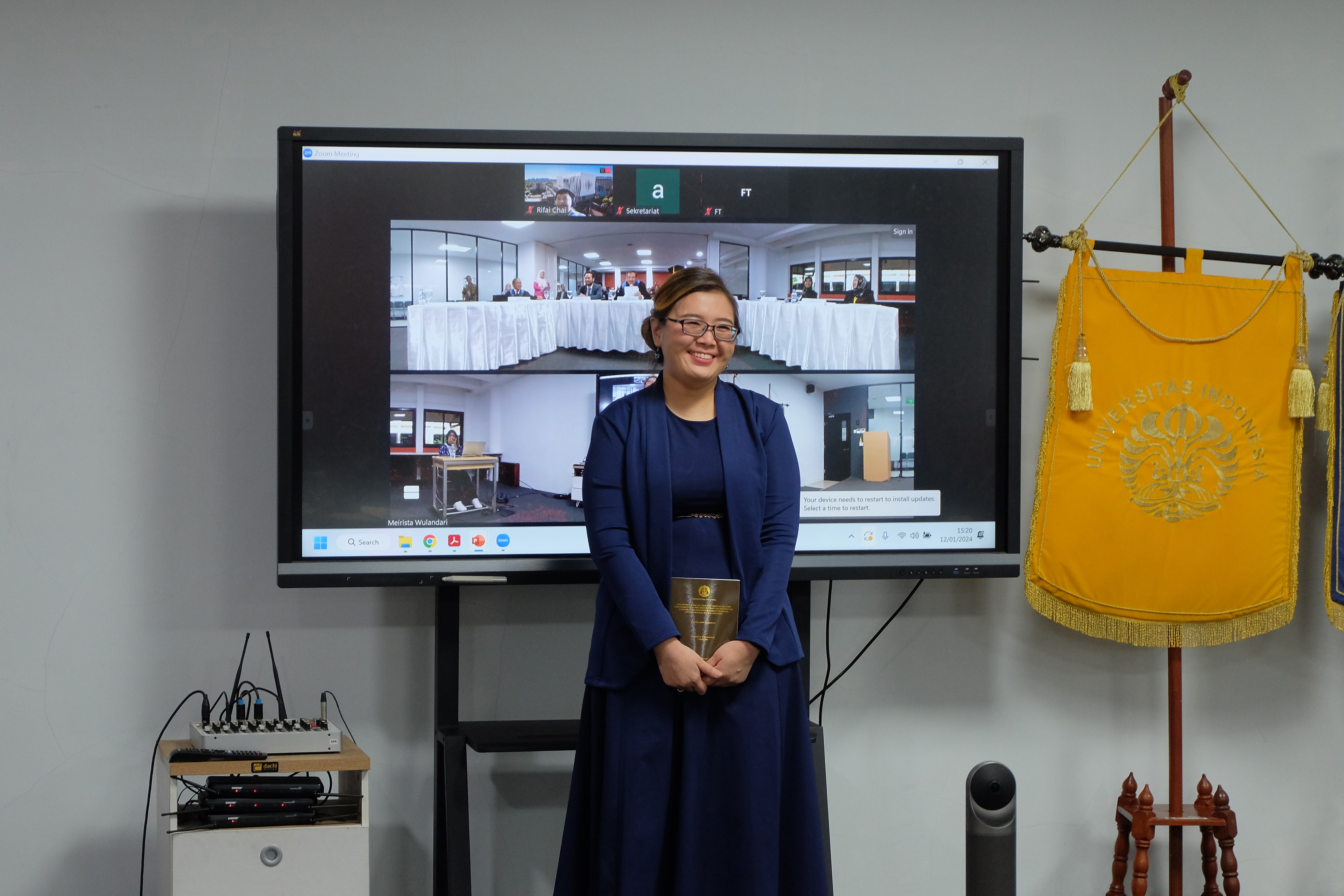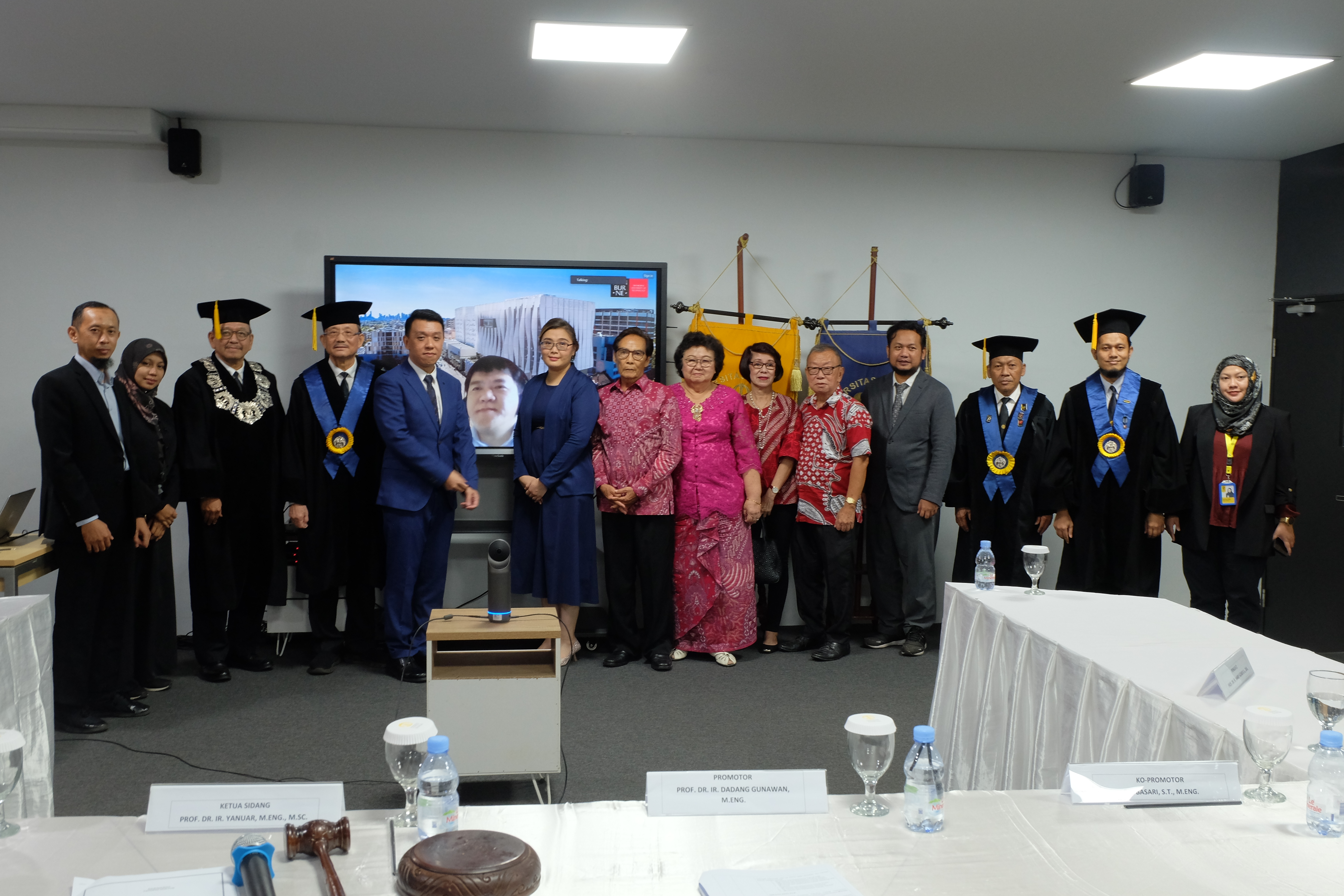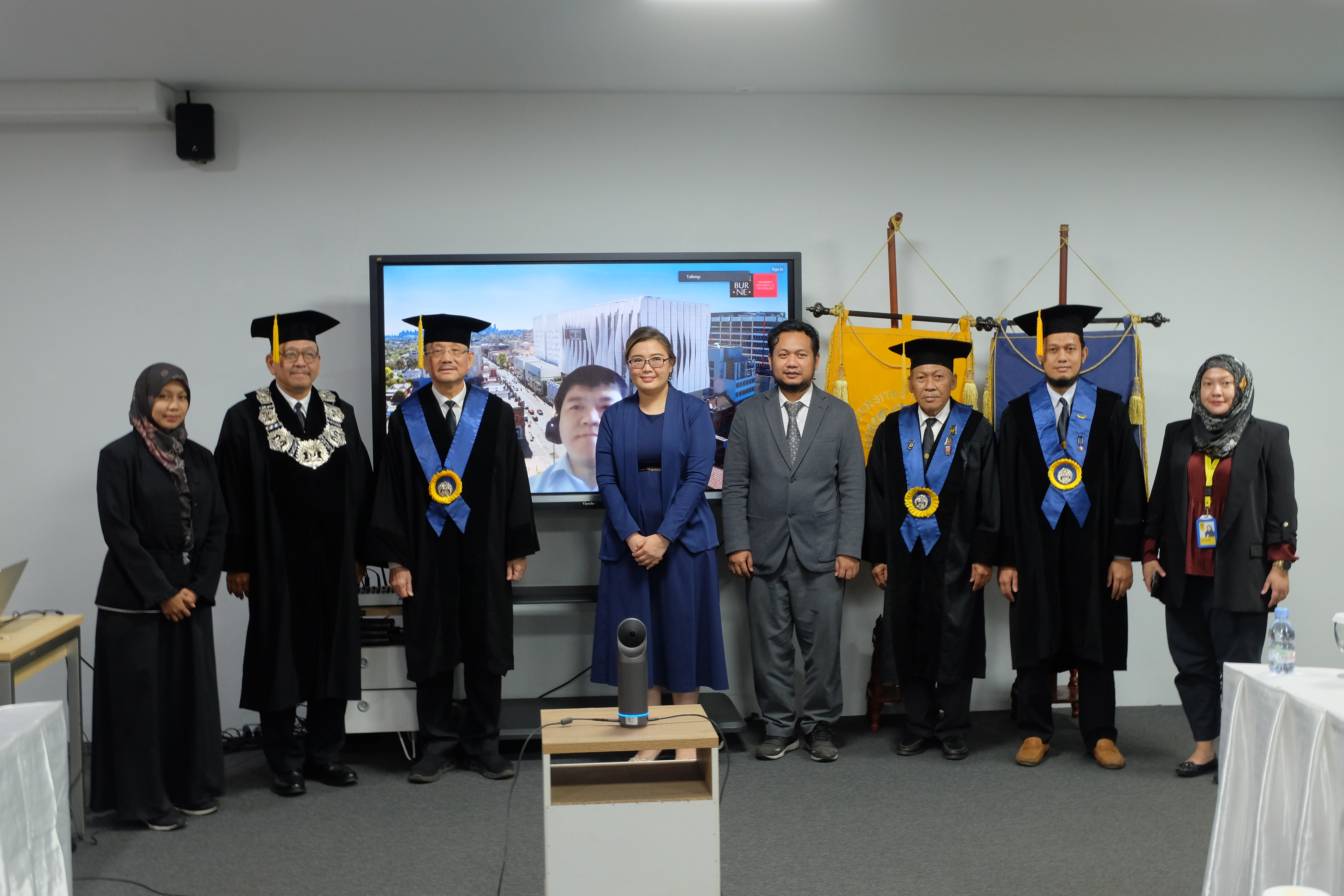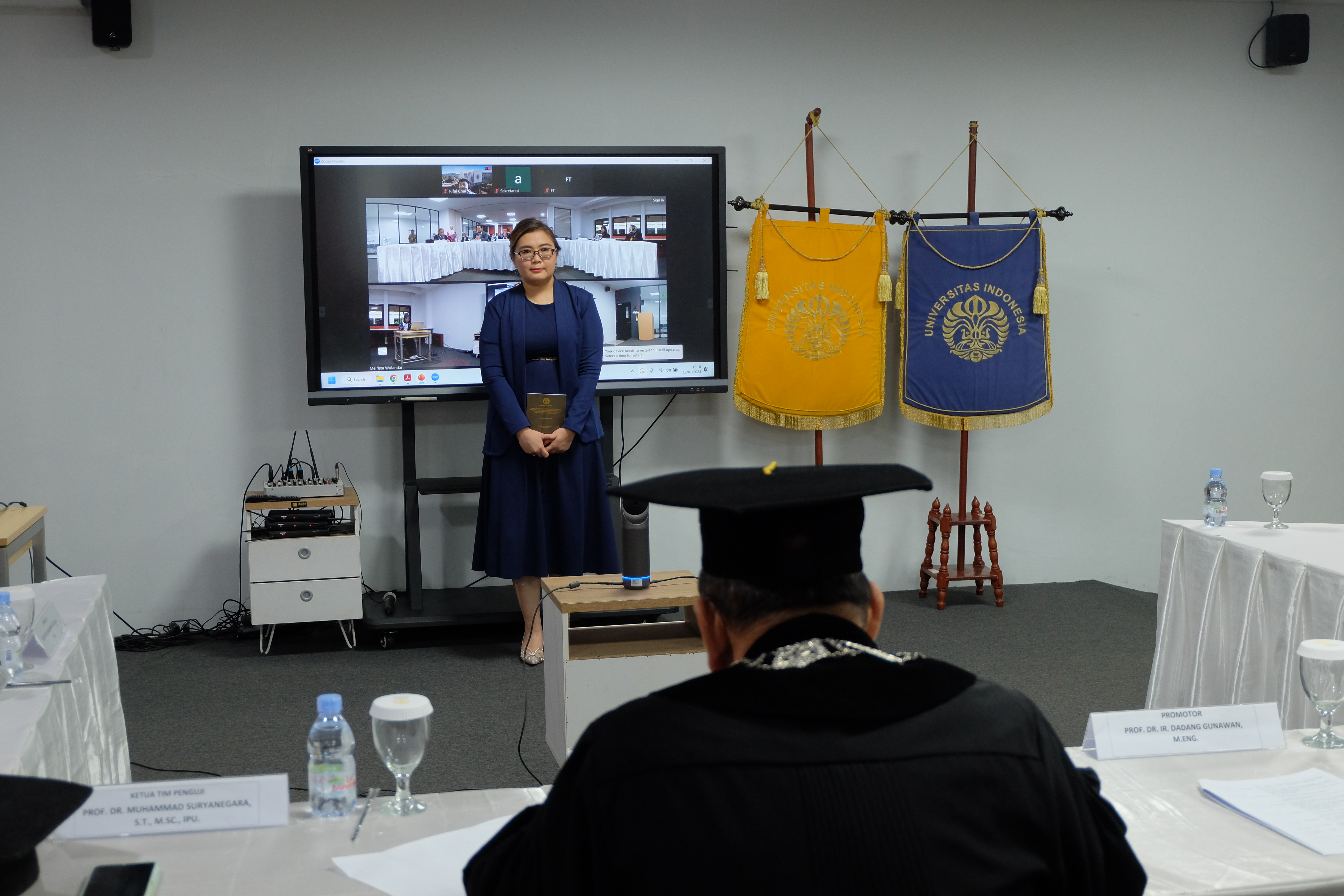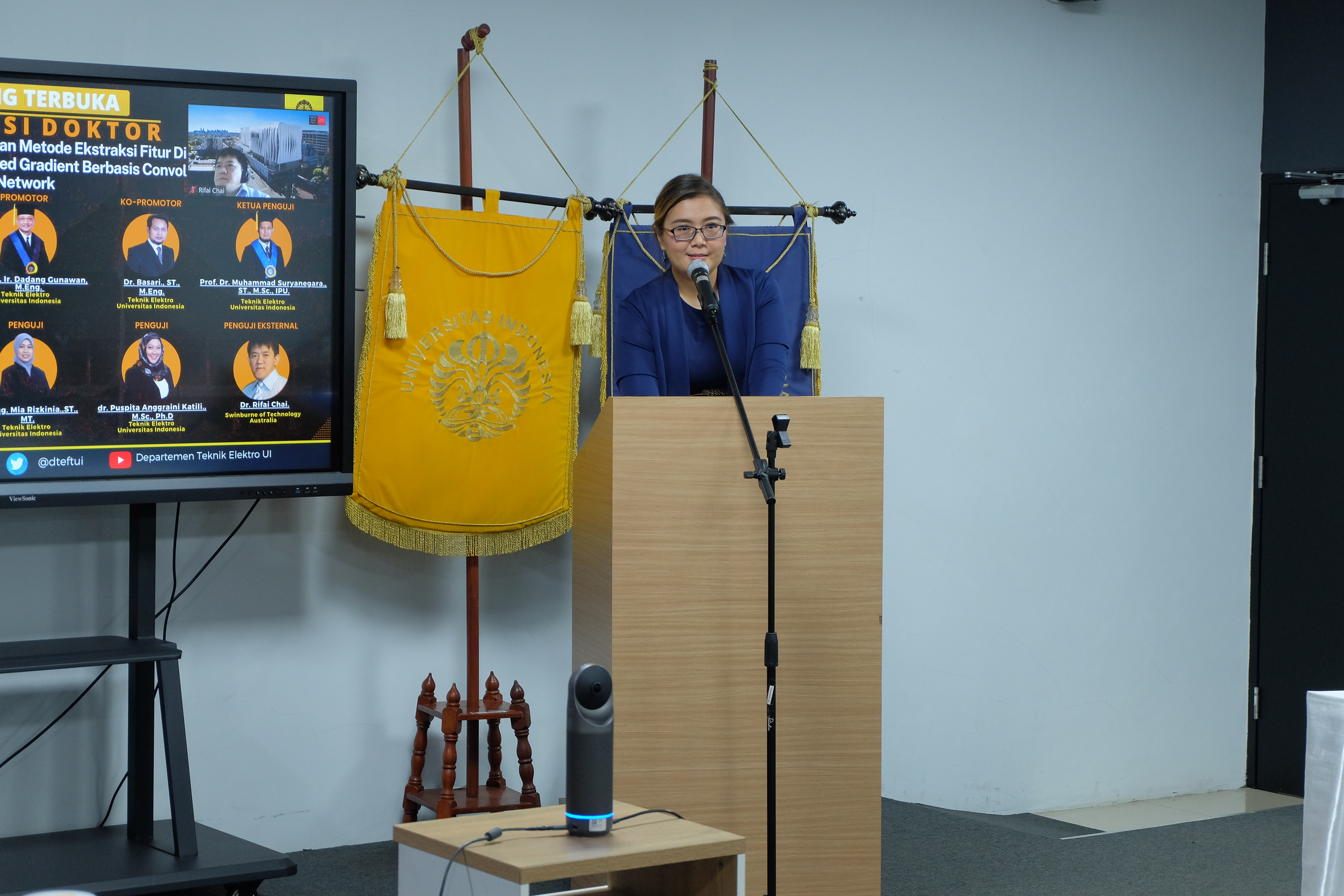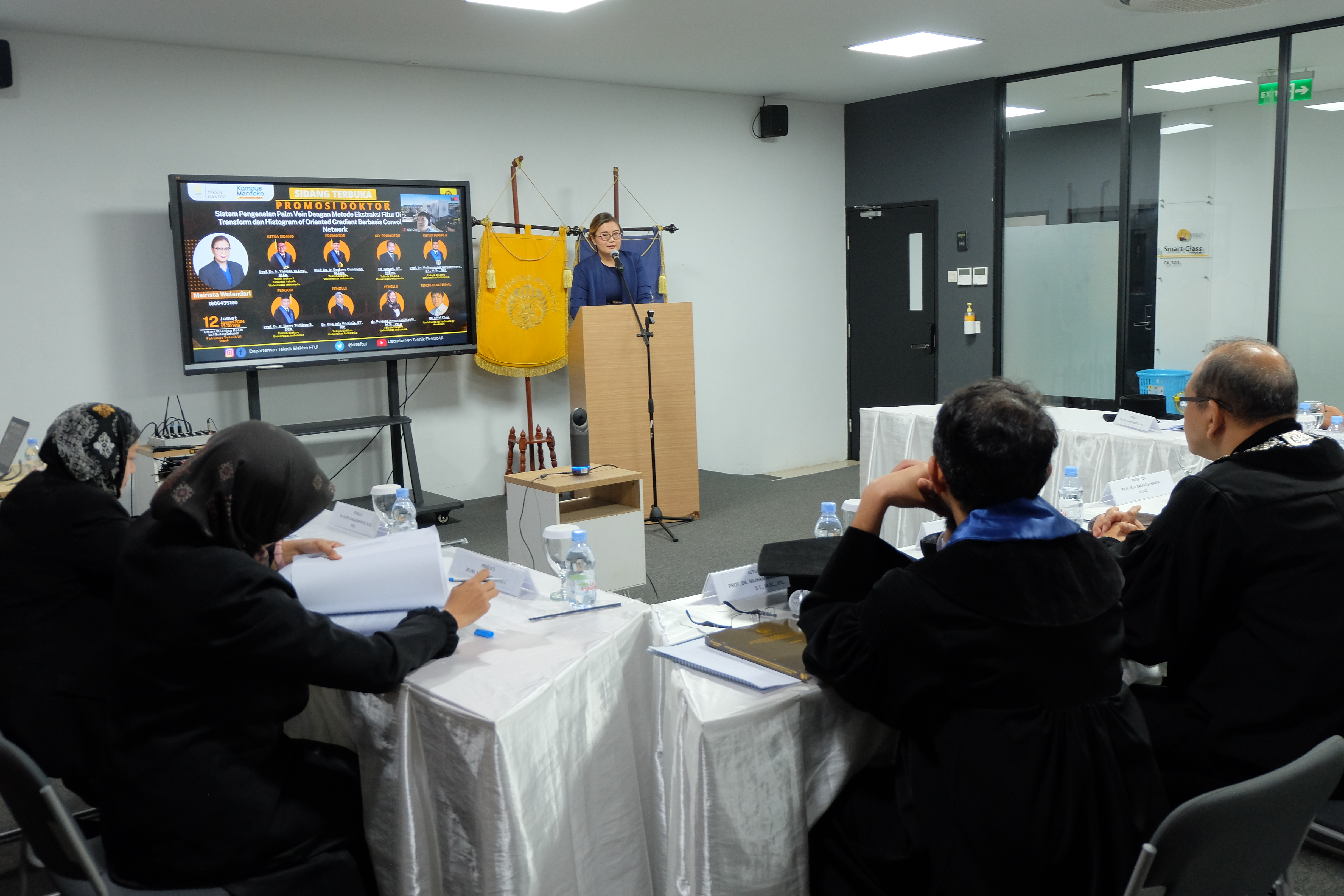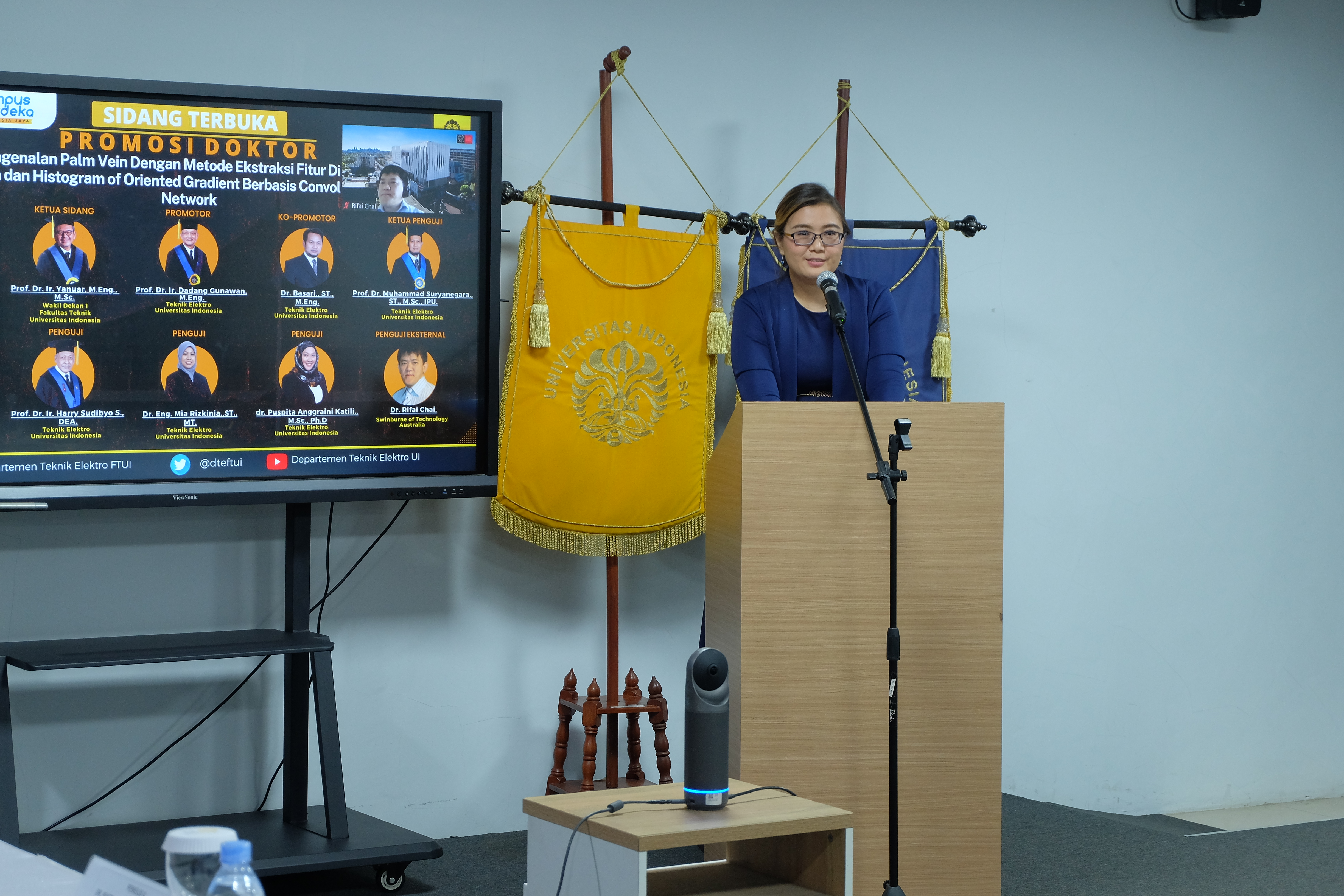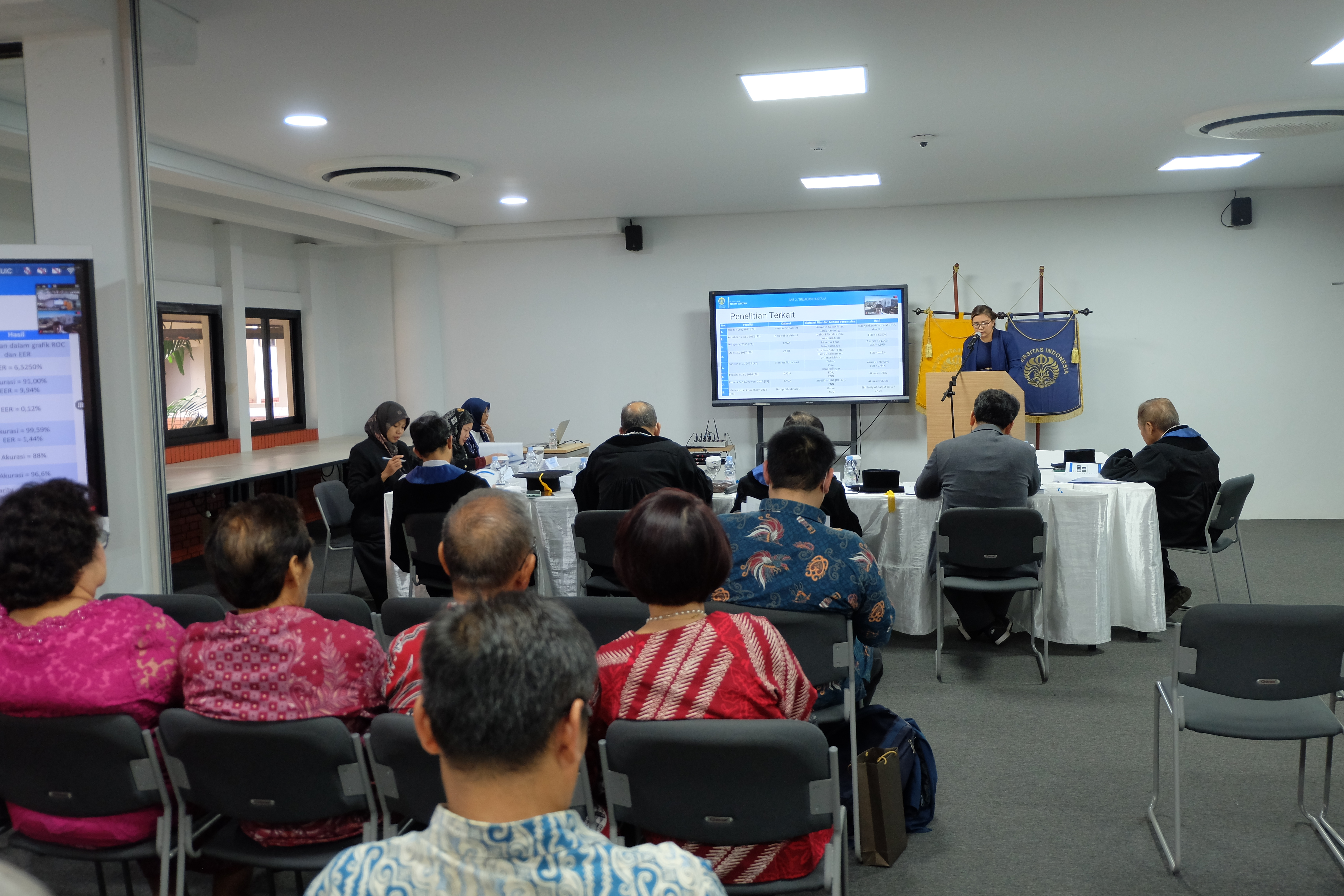Post the Covid-19 pandemic, biometric recognition techniques are becoming more advanced, especially for security purposes. Meirista Wulandari, a doctoral student in the Department of Electrical Engineering at FTUI, conducted a dissertation research related to palm vein biometrics with the title “Palm Vein Recognition System with Discrete Wavelet Transform Feature Extraction Method and Histogram of Oriented Gradient Based on Convolutional Neural Network.” This dissertation was presented at the FTUI Doctoral Promotion Session held on Friday (12/1) in the Smart Classroom, FTUI GK Building.
“Palm vein biometrics are intrinsic biometrics located beneath the human skin, making it advantageous to develop as a verification system. This palm vein recognition system has the advantage of being difficult to duplicate because it is covered by the skin of the palm, making it confidential or secret. It represents the uniqueness of each individual and is prospective for development as a means of identifying someone,” explained Meirista.
In the palm vein biometric identification system, infrared waves are needed to scan blood vessels in the palm, and these waves are absorbed by deoxidized hemoglobin in the blood vessels. The results of this absorption can then be captured by a camera, producing high-quality original palm vein images. Identifying someone’s palm vein requires high accuracy in a short amount of time, and using deep learning Convolutional Neural Network (CNN) can process large amounts of data, solving problems with small recognition error values.
This research used the VeinCNN verification method with four schemes: the verification scheme using the VeinCNN method, the verification scheme using the DWT VeinCNN feature extraction method, the HOG VeinCNN feature extraction method, and the Hybrid DWT-HOG VeinCNN method. The results showed good performance in terms of Accuracy, AUC, and EER parameters. Particularly, based on the analysis results, the use of the Hybrid DWT-HOG VeinCNN verification scheme was able to achieve the highest Accuracy value on the Casia dataset, which is 99.85%, the highest AUC value on the Casia dataset, which is 99.85%, and the smallest EER value on the Casia dataset, which is 0.00083%.
“The development of VeinCNN verification is expected to be further developed into a hardware design for palm vein scanners, both offline and online, to meet industry needs. And it has the potential to be widely developed in terms of dataset types and quantities, given the lack of palm vein datasets from Indonesia,” said FTUI Dean, Prof. Dr. Ir. Heri Hermansyah, ST., M.Eng., IPU, regarding this research.
Through this dissertation, Meirista Wulandari successfully obtained a doctoral degree with a GPA of 3.98, with the predicate “Very Satisfactory.” She is the 168th doctoral graduate from the Department of Electrical Engineering and the 536th from the Faculty of Engineering, University of Indonesia. The doctoral promotion session was chaired by the Session Chair, Prof. Dr. Ir. Yanuar, M.Eng., M.Sc., with the Main Supervisor, Prof. Dr. Ir. Dadang Gunawan, M.Eng., and Co-Supervisor Dr. Basari, ST., MEng. The examination committee consisted of Prof. Dr. Muhammad Suryanegara, ST., M.Sc., IPU., Prof. Dr. Ir. Harry Sudibyo, DEA., Dr. Eng. Mia Rizkiania, S.T., M.T., Dr. Puspita Anggraini Katili, M.Sc., Ph.D., Dr. Rifai Chai.
***
Public Communication Office
Faculty of Engineering, University of Indonesia

